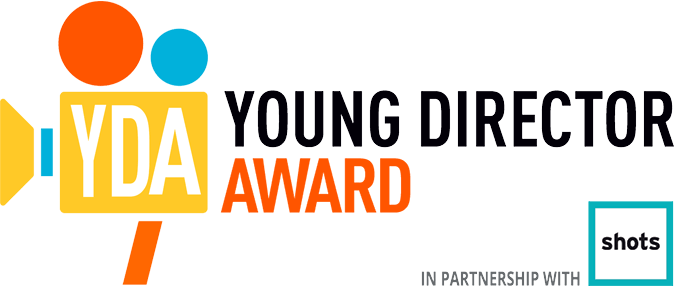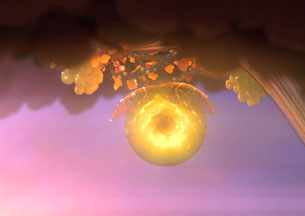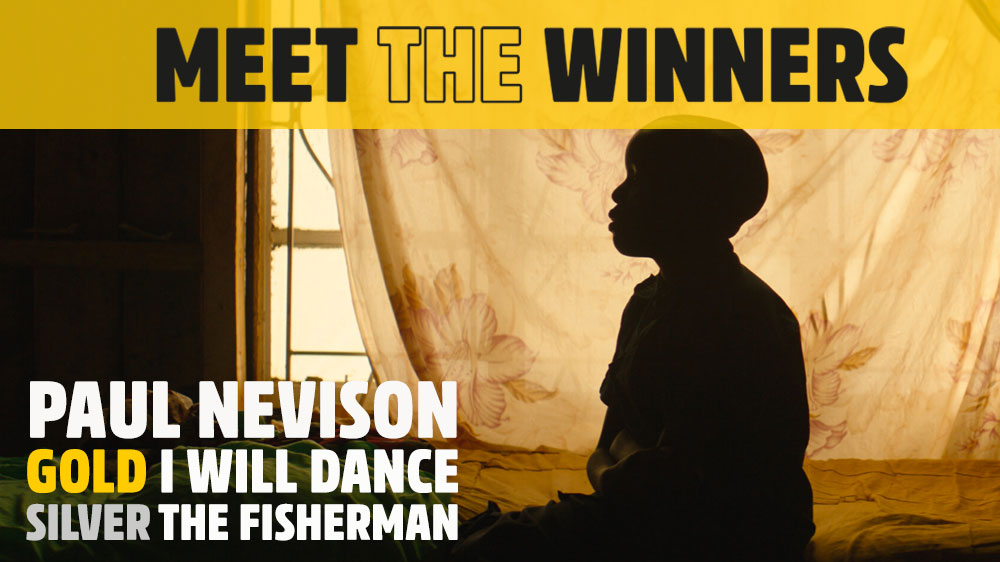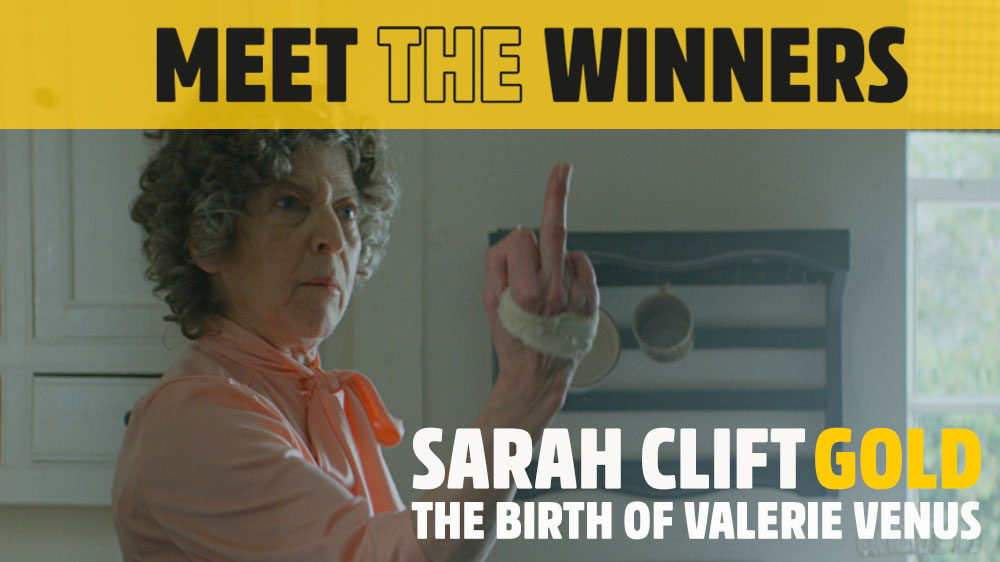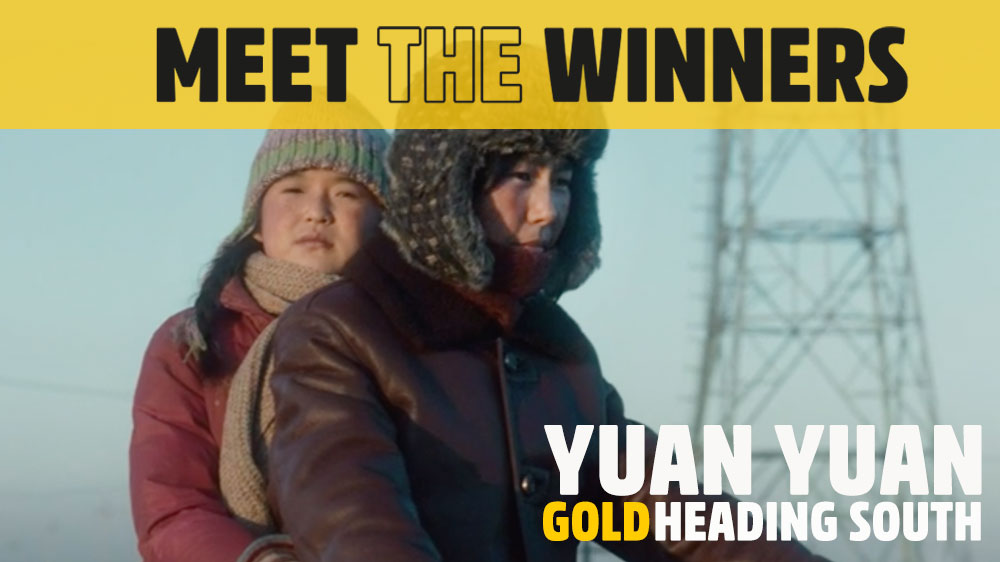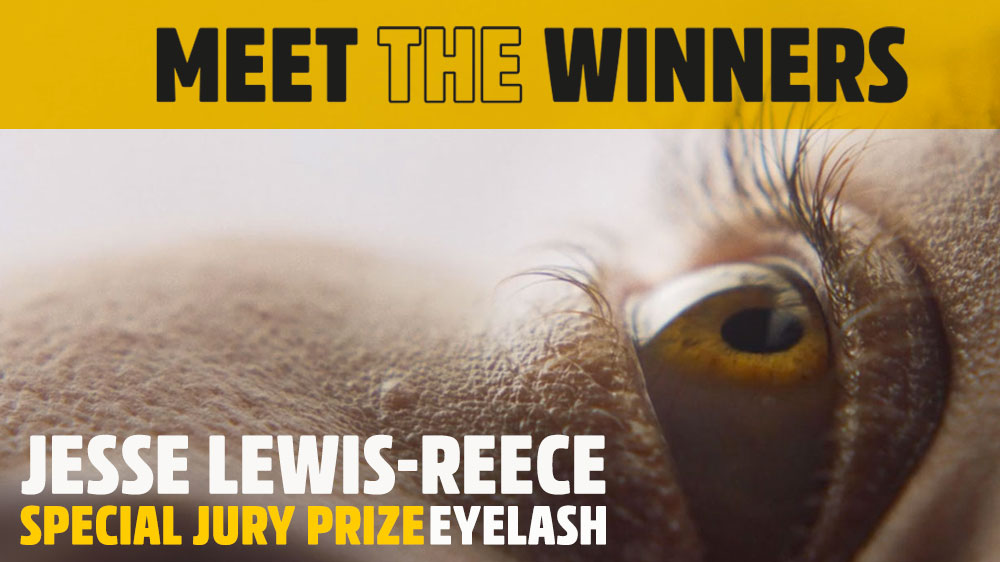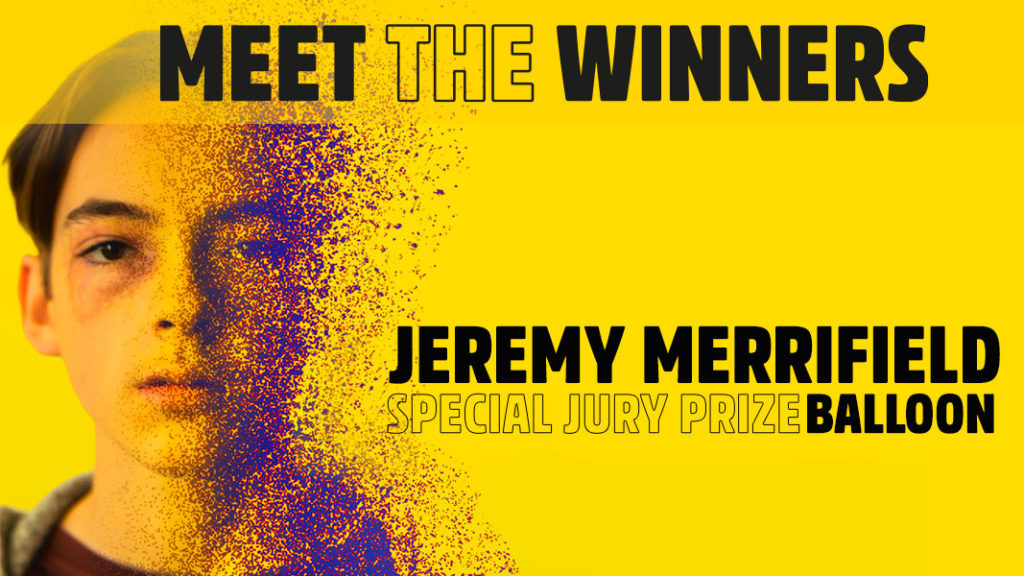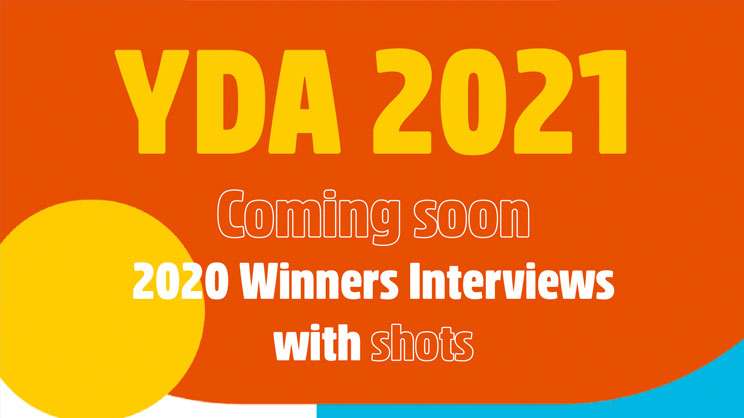We were sorely tempted to introduce Brendan Carroll and Francesco Giroldini’s animated short The Monk & The Monkey with all sorts of primate-related puns – monkey puzzles and going bananas, that sort of thing. But, on reflection, its such a stunning piece of work, that really, we ought to let it speak for itself. With it’s engrossing story, flawless animation and beautiful little Asian design flourishes , is it any wonder we’ve fallen in love?
Carroll and Giroldini worked created The Monk & The Monkey as their graduation film for Ringling College of Art & Design in Florida, a hothouse for the Pixar and Dreamworks animators of tomorrow. This film is special.
How did you two meet and why did you decide to make a film together?
Brendan Carroll: We met at Ringling College while we were both in our 1st year studying. We didn’t talk much at the start. Francesco would stay wickedly silent in the corner and keep doodling in his sketchbooks. I admit I was kinda scared of him! But eventually we mixed (took a few months!) By the end of 1st year we discovered each others abilities and realized we had a similar perspective on putting ideas together. From 2nd year onwards we lived in the same dorm in college and brainstorm ideas throughout our college projects and had great fun doing it. It was only natural after all those months of collaborating that we decided to make a movie together in our final year. We knew it would be ridiculously challenging to make a movie on our own in a year. Francesco wanted a career in lighting and I wanted a career in animation so it worked out pretty well!
Francesco Giroldini: Over the summer of sophomore and junior year we started carrying around a small sketchbook and filled it with what we referred to as ” thesis ideas”: a few paragraphs story ideas, usually accompanied by quick doodles. We often times would erupt exclaiming “Thesis idea!” every time a new idea popped into our mind.
The grade that came before ours inspired us to collaborate; since we saw how much more two people could do and how much more enjoyable the experience of making a movie was when shared with somebody else.
As I understand it, you’re Irish and Italian and graduated from Ringling in Florida. I was wondering if you could tell me a little about your background and why you decided to move all the way to Florida?
Brendan: I was traditionally trained in animation and photography and was waiting on an opportunity to be educated in CG. I was having a dilemma whether I really liked CG or not. I was working in graphic design around 2005, when PIXAR released The Incredibles. That film relieved my CG dilemma! It looked so amazing to me I really felt a new world of inspiration. I never saw a film that obeys the graphic nature of traditional work to such an extent and yet looks so sophisticated in CG. My new dilemma was “what am I doing in graphic design??” so I got up and researched colleges around the world.
My main concern was if I’m sacrificing a day job to go back to college, I should go to a college that promises the graduates a good placement in a career thereafter. After some deep research I was left with Ringling College. The level of work produced there is amazing and the time the industry invests in the students is like no other. When I saw graduates commonly get jobs in DreamWorks and PIXAR I knew it was the right place to go.
Francesco: I was born and lived most of my life in Milan, Italy. Ever since I was a kid I always loved drawing and coming up with stories. I used to draw from comic books and then shuffle my drawings around so that I would create new stories with them.
While in high school I taught myself a lot about CG, animation, photography and lighting. For my last year of high school I made a CG animated short that was a mix between traditional animation (made in Flash) and CG (rendered using Maya vector). After graduating and spending about a year working in a bunch of small studios in Milan I realized I had to move elsewhere in order to realize my ambitions. A friend of mine told me about Ringling and after watching their portfolio of student films I was immediately hooked! I applied to Ringling College of Art and Design and after being admitted, I packed my things, got into an airplane and flew all the way up to Florida to live the most intense four years of my life!
What drew you to animation in the first place?
Brendan: I grew up reading comics and emulating the styles of my favourite artists, like John Hicklenton and Steve Sampson from 2000 AD comics. Their ideas were so bold and every panel was a work of art. I was very lucky to have such an inspirational resource as a teenager. I’d run home everyday to draw from them… as a result my grades sucked so bad! Then when I was about 15 I saw Akira on BBC for the first time. I absolutely fell in love with it! It was taking the comics I read to a new level of cinematography and narrative. I really wanted to create those kind of worlds someday so I focused on animation since then.
When I graduated from secondary school I took a short summer course in Ballyfermot College in Dublin with traditional animation so see if I really would feel comfortable in such an environment. I loved it! They taught me to push my character environments even further in such a short time. I was lucky enough to study there full time in traditional animation.
Francesco: I honestly had no clue that Ringling was so much into animation when I applied to it; I was mostly drawn to the idea of making movies; I had no intention of ending up working at studios like DreamWorks or Pixar.
I initially felt out of place; all my classmates knew Disney characters by name and most of them dreamed of working in studios like Disney or Pixar as character animators.
All my characters and ideas were too different from the school’s standards and I got repeatedly bashed by upperclassmen for my work. Over the course of the four years I gradually started to appreciate animation more and eventually I fell in love with it. I think “The Monk & the Monkey” was the coronation of this long process.
What inspires you?
Brendan: I think community forums or activities are the most inspirational times. I love it when people share their experiences or invite others to talk about it, especial when such amazing work is produced.
I remember attending figure drawing classes in Dublin, they were open to the general public so I’d be in the same class as law students and medical students to architects and housewives, pretty diverse you can imagine. I loved it! Looking at how people from various backgrounds drew the figure were so refreshing at times, it’s proof that no one has to be specifically disciplined in drawing to create something so beautiful. I really enjoyed talking to them about it too. Looking at that work I felt so free I could do anything I wanted.
Francesco: I’m inspired by a lot of different things; I noticed that I tend to be more creative when I break out of my usual routines, for example while traveling or immediately after moving into a new place. I also noticed that I tend to be more creative when I’m already working on something, almost like a diesel engine that starts slow but as it speeds up it gains momentum.
I spend a lot of time looking at other people’s blogs or forums; when I see some kick-ass work it makes me want to work harder!
How did the idea for The Monk and The Monkey come about?
Brendan: Everything started with a painting I did of a Shaolin monk and a crazy monkey challenging each other. Conceptually there was this yin yang element to it. It was difficult to know who the monk was, or who was the monkey?
We began brainstorming the idea back in March of 2009. The first draft involved a monk in a garden and a cheeky monkey giving him a hard time. Then it evolved into a monk researching botanical life and the monkey causing him grief. Eventually we liked the idea of the monk in training to be a young boy as this gave us more leverage to develop the character more and for him to learn a lesson.
Francesco: By the end of the summer we had a vastly different story, new designs for our characters, props and sets. The story went through several passes as the character designed changed and new meaning was given to the props to reinforce the story.
Brendan: We also incorporated what Ragu wore to drive the story. His peasant-like hat described him as a boy from poverty. At the beginning of the movie we see he has lust for Earthly possessions when he gazes at the golden hat, like a boy gazing at an action figure in a store.
Francesco: Ragu’s hat became a symbol of his identity and as he lost his in the attempt to save the monkey he gained a new and greater one at the end of the movie. The staff he was given at the beginning of the movie was returned in the end to provide a strong visual way to show Ragu’s failure.
Even after production began we still made story changes, particularly to the chase scene and the ending. We tried to make changes to the story in parts that still weren’t completely fleshed out so that we didn’t have to redo our work several times.
Brendan: I think a huge challenge was to bring a satisfying closure to our story. The ending scene went through as much as 5 different changes during actual production time.
Francesco: We initially paid more attention to sequences that we knew weren’t going to change and for those that weren’t there just yet, we kept them simple up until we got them right on paper, and only then we committed to put time and effort to polish them.
What were the biggest challenges with making the film?
Brendan: Story-wise the chase scene and the end scene were the most challenging. Into production the chase scene had to be re-boarded. Francesco came up with engaging solutions for this problem though, so I was very fortunate to be working with someone so talented with solutions. We knew it was missing action beats so it had to be addressed immediately. We faced the same dilemma with the ending scene. I had to reanimate the ending about five different ways. It’s always a challenge to end a story on a rewarding note for the viewers, so we recorded and re-recorded dialogue over and over again!
We only nailed the ending down in January, three months before production ended. So you can imagine how challenging that was!
The cliff scene was also a real challenge to keep consistent in terms of tension. If one shot fell flat it would immediately make the drama less tangible. I spent a while making more and more animation passes for the cliff scene to really pay off. We had to cut about 8-10 shots out of it because it was taking too long for the scene to get from A to B. Again a lot of work went down the tube, but that’s the nature of the beast.
Other challenges we faced were the dynamic elements with Ragu, to make sure there were as little com-penetration problems as possible with his belts. We had to fix a lot of those glitches in post production, so there was major post-production retouching for a lot of scenes. Nuke was a blessing to the project in that respect.
Cloth simulation on the master was a challenge also. When I animated him there was no cloth simulation. Then after I was satisfied with the animation I ran the cloth simulation and I’d see the bad news! So to fix those problems I’d have to go back and tweak the animation to make the cloth simulation work.
Francesco: I will agree with Brendan that the story was the hardest thing to get right, and that we had to make many sacrifices in order to get it to work. Any time that we spent changing the story was time that we were not going to get back. Eventually, towards the end of production I ended up having to work having 4 Maya running at the same time so I could make changes to several shots at the same time!
Another big challenge was to keep render times as low as possible. This led us to decisions such as to go for transparency mapped planes for the monkey’s fur and the tree’s leaves, to ban point lights and raytraced shadows from the production and limit raytraced reflections to the objects that absolutely needed it.
Another trick that we used to speed up our renders was to use sets for our subsurface-scattering (sss) and our reflections and to hide anything that was not visible on camera.
For static shots or shots where the camera was simply pulling in we rendered one still, blurred it in compositing and scaled it over time!
To find out more, check out Brendan’s site here and Francesco’s here.
